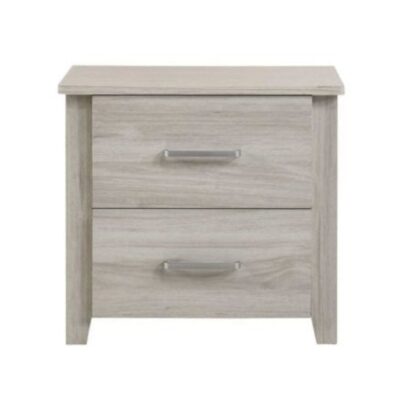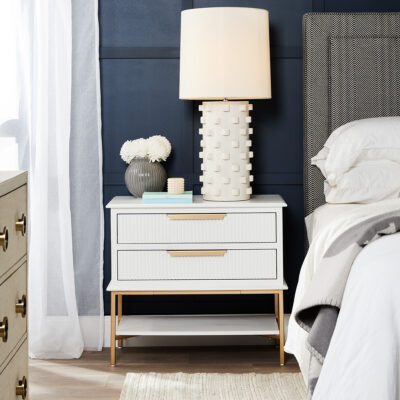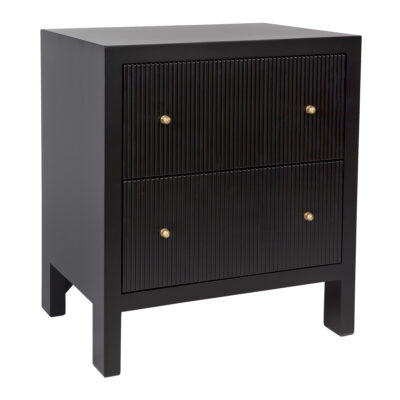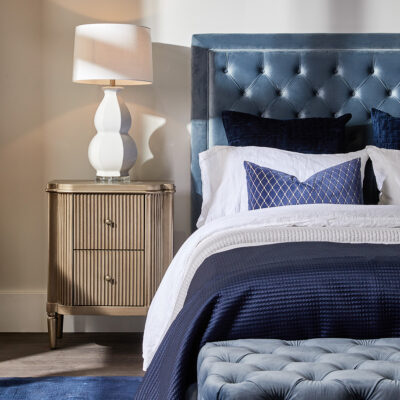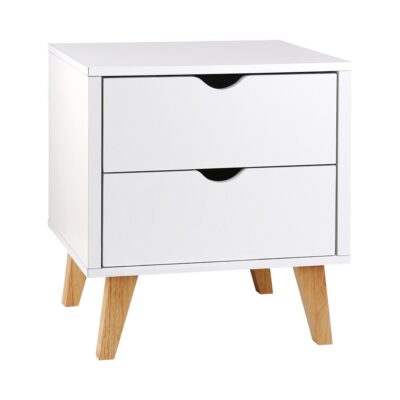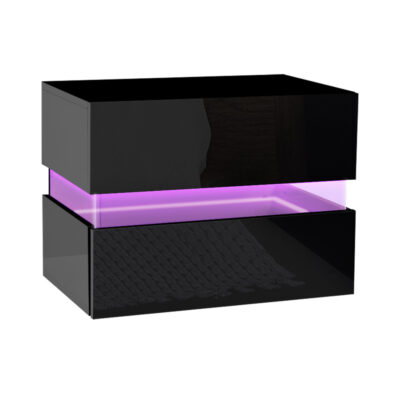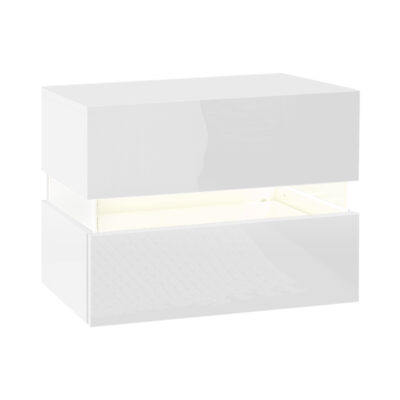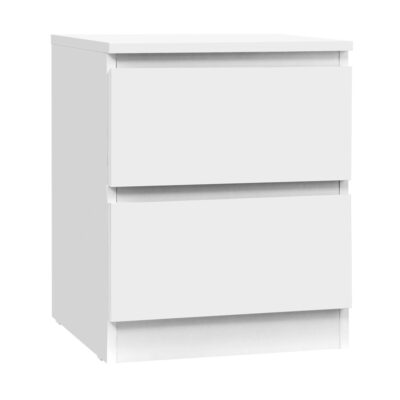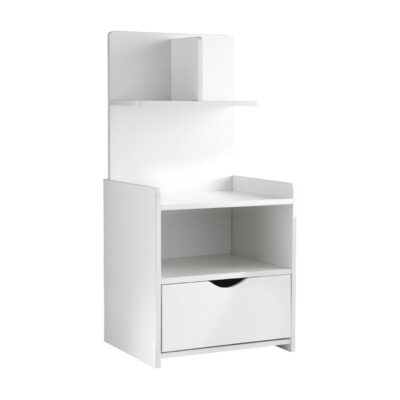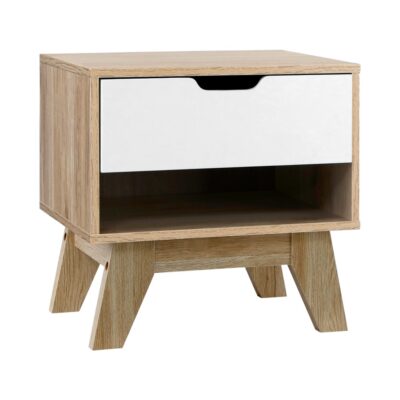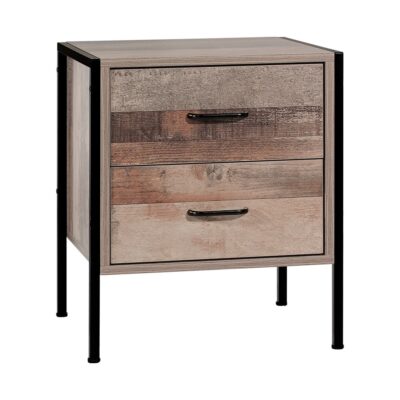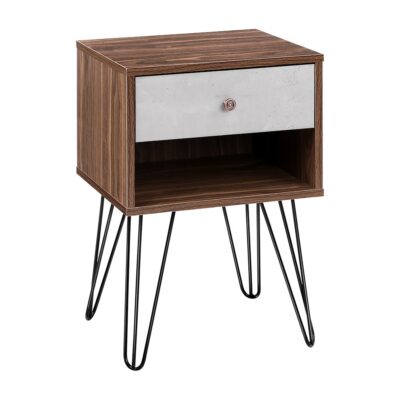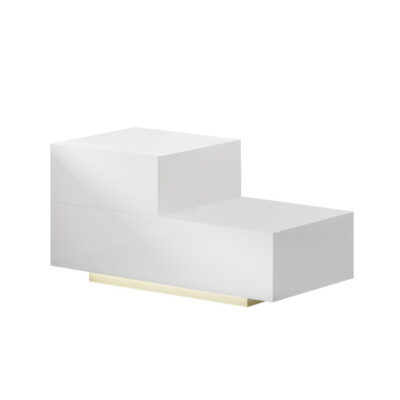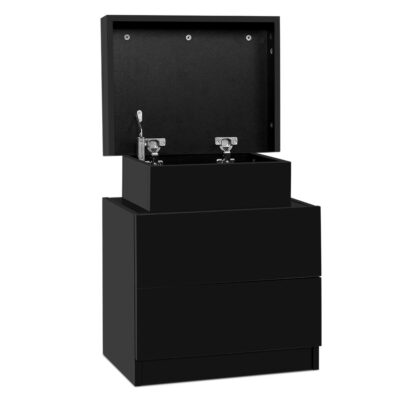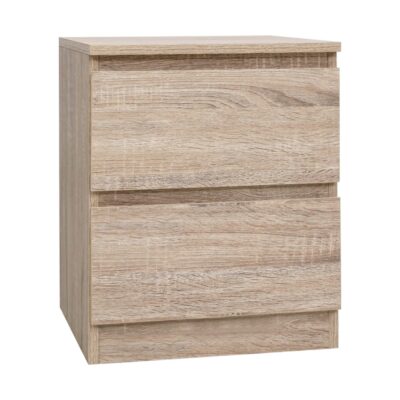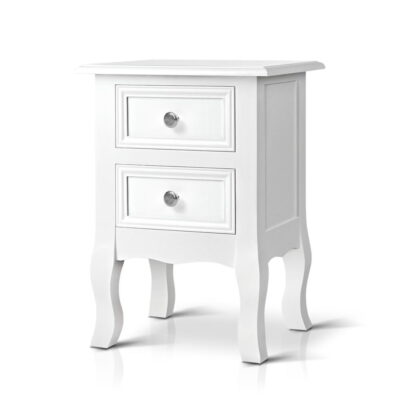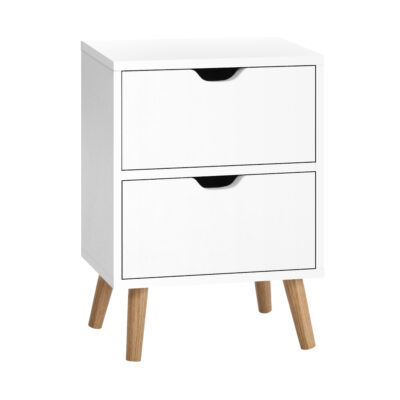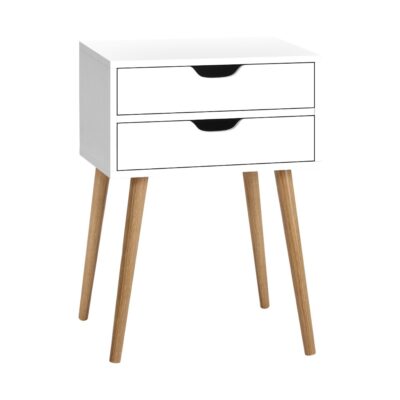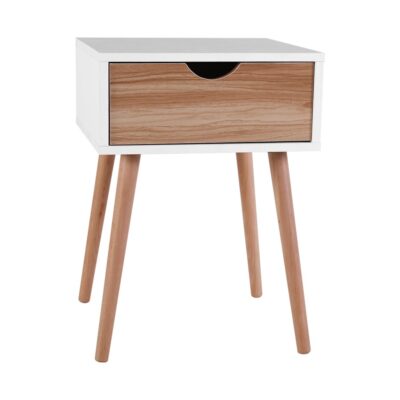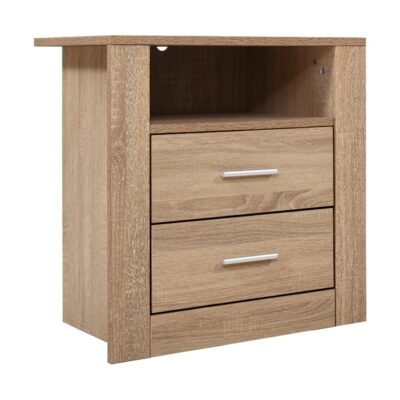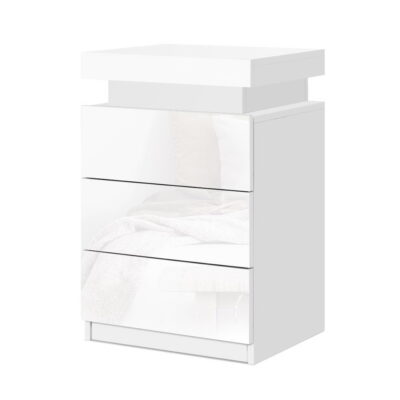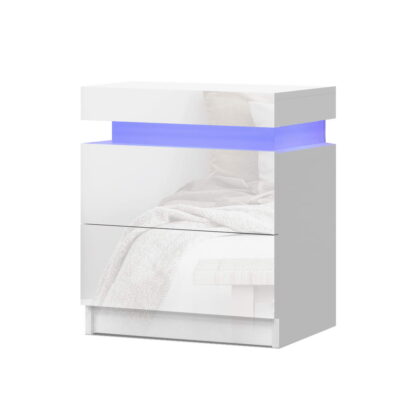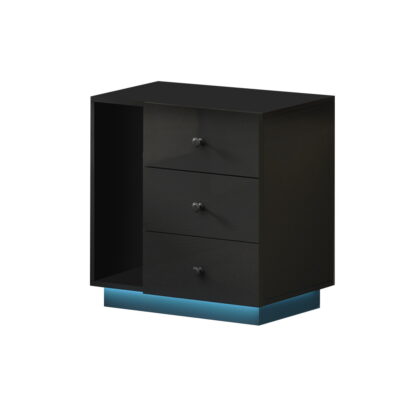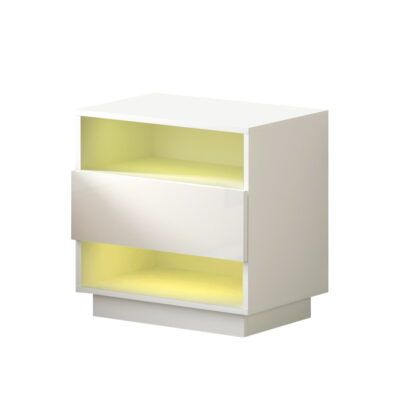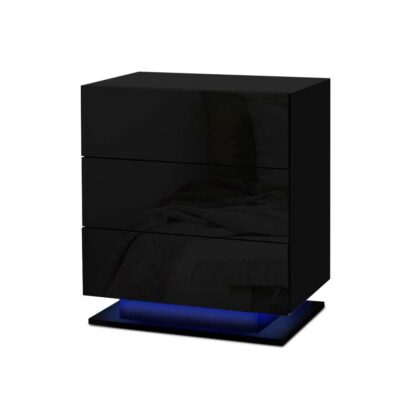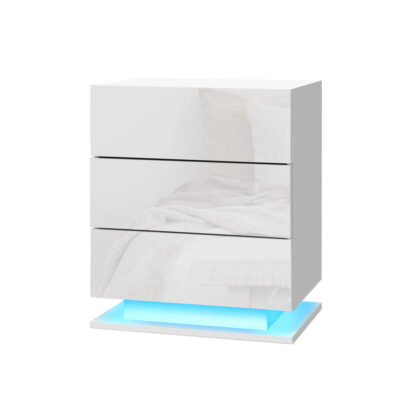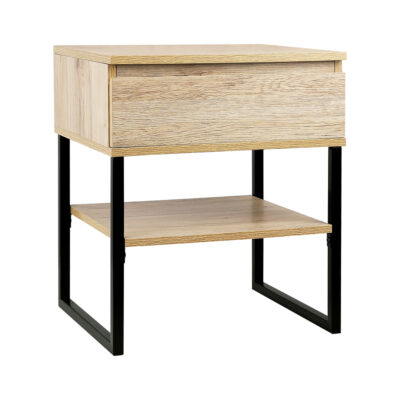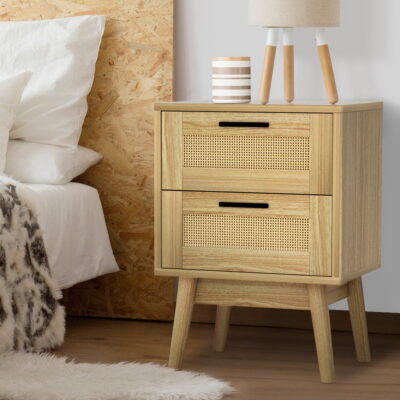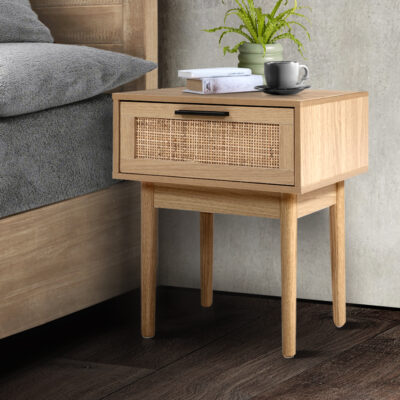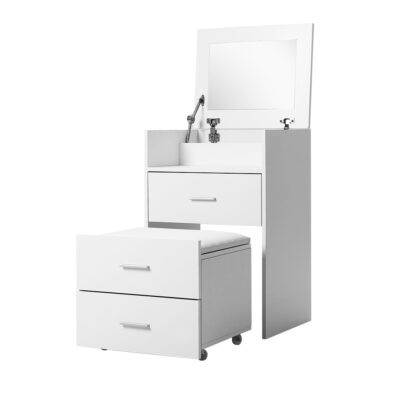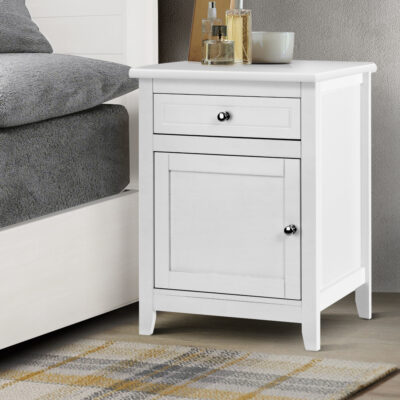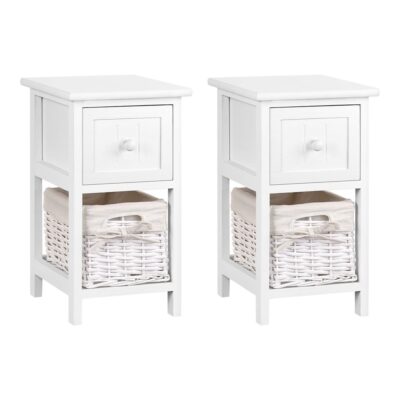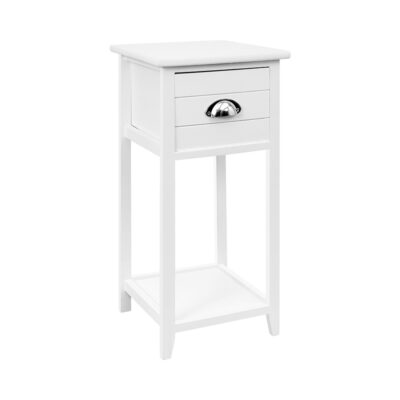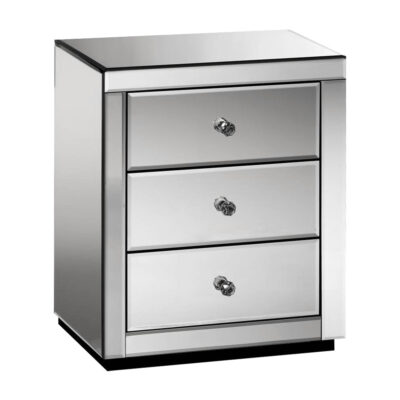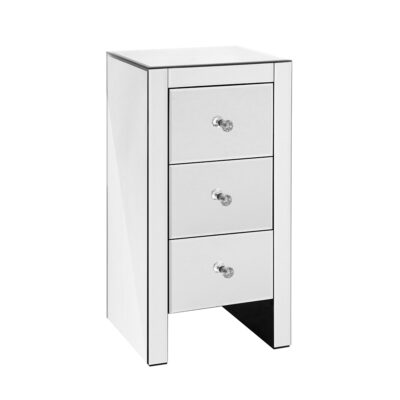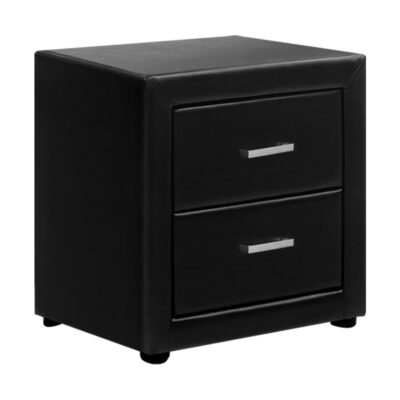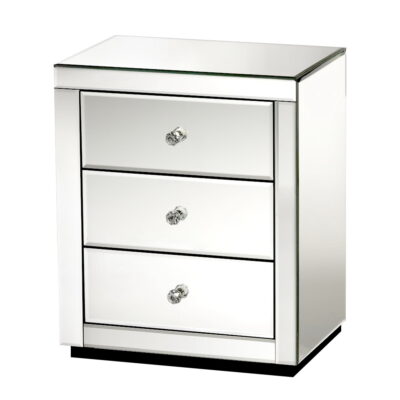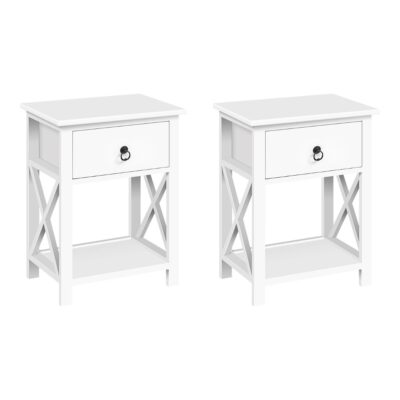Bedside Tables
Bedside tables make a stylish night-time companion.
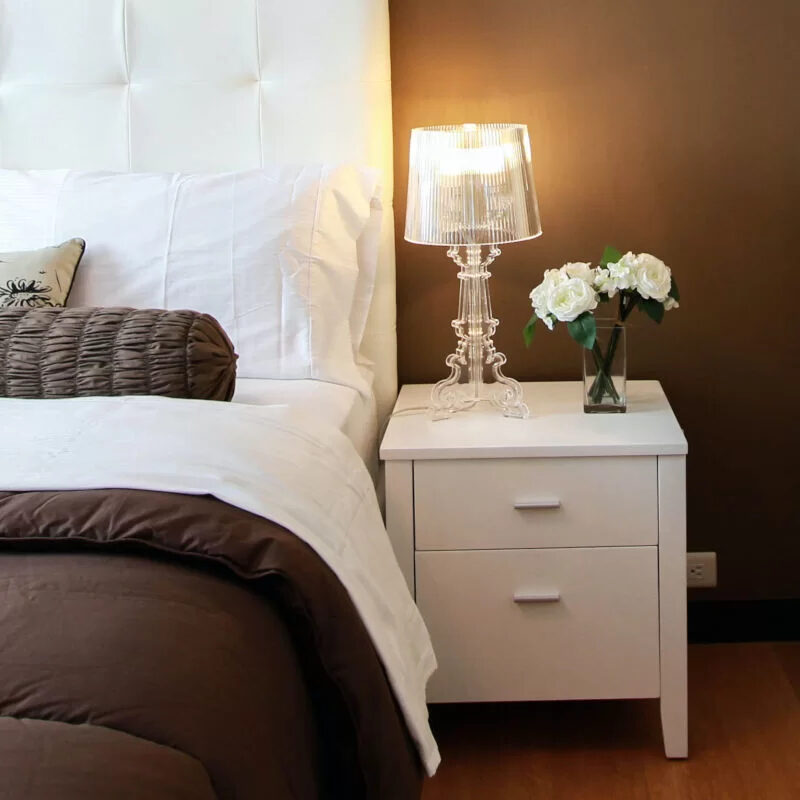 Bedside tables can add style and functionality to your bedroom. These small bed side tables are typically placed next to a bed and can serve various purposes. One of the main functions of a bedside table is to provide storage for items you may need during the night or first thing in the morning. This might include a lamp, a book, a glass of water, a phone charger, or any other small items that you want to keep close at hand.
Bedside tables can add style and functionality to your bedroom. These small bed side tables are typically placed next to a bed and can serve various purposes. One of the main functions of a bedside table is to provide storage for items you may need during the night or first thing in the morning. This might include a lamp, a book, a glass of water, a phone charger, or any other small items that you want to keep close at hand.
Showing 1–60 of 187 results
Bedside tables can also be used to add decorative elements to a bedroom. You can choose a table that complements your room's overall style, whether modern, traditional, or something in between.
You can also use your bedside table to display items that have personal meaning, such as family photos or treasured objects.
Overall, bedside tables are a versatile and stylish addition to any bedroom. They provide practical storage solutions and add a touch of elegance to your space.
Bedside table trending styles and designs
Bedside tables come in a variety of styles and designs, and there are several current trends that you may find popular.
- Minimalist design: One trend that has gained popularity in recent years is a minimalist design, which features clean lines and a simple, uncluttered look. Bedside tables with a minimalist design are typically made from wood or metal, often with a single drawer or shelf.
- Natural materials: Bedside tables made from natural materials such as wood, bamboo, or rattan are another popular trend. These materials add warmth and texture to a room and can help create a cosy, natural atmosphere.
- Retro style: Retro-inspired designs are making a comeback in bedside tables. Consider mid-century modern styles with sleek lines, curved edges, and tapered legs. These designs add a touch of nostalgia to a room and can work well in modern and traditional interiors.
- Mixed materials: Another trend in bedside tables is using composite materials, such as wood, metal, and glass. This creates an interesting visual contrast and can add a touch of sophistication to a room.
No matter your style or design, a well-chosen bedside table can add function and style to your bedroom.
Choose the colours and materials of bedside tables to suit your bedroom decor.
Choosing the right colours and materials for your bedside tables can help them to blend seamlessly with your bedroom decor. Here are some tips:
- Consider the overall style of your room: If your room has a traditional style, consider a wooden bedside table in a classic design. If your room is more modern, go for a bedside table made of metal or glass with clean, minimalistic lines.
- Coordinate with your bed: Your bedside table should complement your bed. If you have a wooden bed frame, choose a bedside table in a similar wood tone. A metal or glass bedside table might be a good match if your bed has a metal frame.
- Think about the colour scheme: The colour of your bedside table should work with the colour scheme of your room. If you have neutral walls, choose a bold bedside table to add colour to the room. On the other hand, if you have a colourful room, a more subdued bedside table might be a better choice.
- Don't be afraid to mix materials: You don't have to choose a bedside table made of the same material as your bed. In fact, mixing materials can add interest and texture to your room. For example, pair a wooden bed frame with a metal or glass bedside table.
- Consider the size of the room: If you have a small room, choose a compact bedside table that doesn't take up too much space. You could go for a more substantial table in a larger room that provides additional storage and visual interest.
The key is choosing a bedside table that complements your room's style and colour scheme and provides the right mix of functionality and visual appeal.
Elevate your style with new bedside tables.
Upgrading your bedside tables can be an easy and effective way to elevate the style of your bedroom. Here are some tips for choosing new bedside tables that will add a touch of elegance to your space:
- Look for quality materials: High-quality materials such as solid wood, metal, or glass can make a big difference in the appearance and durability of your bedside tables. Avoid low-quality materials such as particleboard or plastic.
- Choose a design that complements your bed: Your bedside tables should work with the style of your bed. If you have a traditional bed frame, you might opt for bedside tables with classic detailing, while a modern bed frame might call for a more minimalistic design.
- Consider the size and shape: Your bedside tables should be proportional to your room and bed size. If you have a small room or a low-profile bed, choose a more compact table with a slim profile.
- Think about storage needs: If you need additional storage space, consider bedside tables with drawers or shelves to keep your night-time essentials organised and within reach.
- Feel free to mix and match: While matching bedside tables can create a cohesive look, mixing and matching different styles or materials can add visual interest and texture to your space.
Overall, investing in new bedside tables can be a great way to elevate the style of your bedroom. By considering the materials, design, size, storage, and mix-and-match options, you can find the perfect bedside tables to suit your needs and enhance the overall look of your space.
Finding the right size and height for your bedside table
Choosing the right size and height for your bedside table is essential to ensure it's functional and visually appealing in your bedroom. Here are some tips to consider when selecting the right size and height for your bedside table:
- Measure the height of your bed: Your bedside table should be level with or slightly lower than the top of your mattress. This will make it easy to access items on the table, such as a lamp or glass of water, without reaching up or down.
- Consider the size of your room: The size of your bedside table should be proportional to the size of your room. If you have a small room, you might opt for a more compact bedside table to avoid cluttering the space. If you have a larger room, use a larger bedside table that provides more storage and visual interest.
- Evaluate your storage needs: Your bedside table should provide enough space for the items you need to keep close at hand, such as books, glasses, or medication. Consider a bedside table with drawers or shelves if you need more storage.
- Think about your design preferences: The style and design of your bedside table can also impact the size and height you choose. For example, a table with a slim profile and minimalistic design might work well in a small bedroom. A larger table with ornate details might complement a traditional design scheme.
- Remember your personal comfort: When selecting your bedside table's height, consider your comfort level. You might want a taller bedside table if you prefer a higher bed. A lower bedside table might be more comfortable with a lower bed.
By considering these factors, you can find the right size and height for your bedside table that fits your needs and complements the overall look of your bedroom.
Bedside tables Storage options
Bedside tables can provide a convenient and accessible place to store your night-time essentials. Here are some storage options to consider when choosing a bedside table:
- Drawers: Many bedside tables feature one or more drawers, which provide a secure and organised place to store items like books, glasses, and medication. Look for bedside tables with sturdy, well-built drawers that slide smoothly.
- Shelves: Bedside tables with shelves can provide open and easily accessible storage space for items like reading material or decorative accents. Some bedside tables may have a combination of drawers and shelves for additional storage options.
- Cabinets: Some bedside tables come with cabinets that can provide a larger and more secure storage option for items that must be kept out of sight. Cabinets can be beneficial for storing more oversized items like laptops or tablets.
- Hidden storage: Some bedside tables come with hidden storage compartments, such as a lift-top surface or a pull-out tray, providing a discreet place to store items like jewellery or valuables.
- Built-in charging stations: Many modern bedside tables have built-in charging stations, which provide a convenient and organised place to charge your electronic devices overnight.
Consider which storage options will most benefit your needs when choosing a bedside table. Drawers, shelves, and cabinets all have advantages, depending on what you need to store. Considering these options, you can find a bedside table that provides the proper storage and functionality for your needs.
Frequently Asked Questions For Bedside Tables
What do you call a table for the bedside?
The table beside the bed is called a bedside table. A bedside table is a small table or cabinet placed next to a bed. A table beside the bed holds items you might need during the night, such as a lamp, alarm clock, phone, or book.
The table for the bedside is also sometimes referred to as a nightstand or night table.
Should bedside tables be taller than the bed?
No, bedside tables should generally not be taller than the bed. The ideal height for a bedside table is level with or slightly lower than the top of your mattress. This makes it easy to reach items on the table, such as a lamp or glass of water, without getting up or down.
If a bedside table is taller than the bed, it can be difficult to access items on the table, making the room look unbalanced. In addition, a more elevated bedside table can create awkward proportions and make the bed feel smaller by comparison.
That being said, the ideal height of a bedside table can depend on personal preferences and the specific design of the table and bed. Some people prefer a taller or shorter bedside table, depending on their needs and comfort level.
However, as a general rule, choosing a bedside table that is level with or slightly lower than the top of your mattress for the most functional and visually pleasing setup is best.
How many drawers should a bedside table have?
The number of drawers a bedside table should have depends on your needs and preferences.
Some people prefer a simple bedside table with no drawers, while others may prefer a table with multiple drawers for additional storage. If you only need to store a few small items, a bedside table with one or two drawers may be sufficient.
However, consider a bedside table with three or more drawers if you have many things to keep organised. It's crucial to remember that having too many drawers on a bedside table can make the table look bulky and overcrowded, making it difficult to access the items you need.
On the other hand, having fewer drawers can limit the amount of storage space available. When choosing a bedside table with drawers, consider the size and how they will accommodate the items you need to store.
Look for well-built drawers that slide smoothly to make it easy to access your items.
Ultimately, the number of drawers you choose for your bedside table should be based on your individual needs and preferences, as well as the style and design of your bedroom.
What is the difference between a nightstand and a bedside table?
A nightstand and a bedside table are similar; the terms are often interchangeable. Both nightstands and bedside tables are small tables typically placed next to a bed and used to hold items such as lamps, books, and alarm clocks.
The term “nightstand” is more commonly used in the United States, while “bedside table” is used in Australia and other parts of the world. Some people also use the term “night table” to refer to a small table beside a bed.
While there is no functional or design difference between nightstands and bedside tables, there may be subtle differences in how the terms are used in different contexts or by manufacturers.
For example, some furniture companies may use the word “nightstand” to refer to a particular style or design of a small table, while others may use “bedside table” for a similar style or design.
Ultimately, the terms nightstand and bedside table can be used interchangeably to refer to a small table next to a bed that holds various items.
What is a standard bedside table?
A standard bedside table is a small table placed next to a bed and used to hold items such as lamps, books, alarm clocks, and other bedside essentials.
A standard bedside table typically measures between 50 and 70 centimetres in height and has a surface area that is large enough to accommodate a lamp, a clock, and a few small items.
The table may also have one or more drawers or shelves to provide additional storage space.
The design and style of a standard bedside table can vary widely, depending on the manufacturer, the materials used, and the room's overall aesthetic.
Some common materials for bedside tables include wood, metal, glass, and acrylic, while popular styles range from traditional to modern and minimalist.
Ultimately, the key feature of a standard bedside table is its size and functionality, as it is designed to provide a convenient and accessible surface for items that you may need to access while in bed.
Whether you opt for a simple, functional design or a more elaborate and decorative option, a standard bedside table is an essential piece of furniture for any bedroom.
Do bedside tables need to be symmetrical?
Bedside tables do not necessarily need to be symmetrical, but they should be balanced in relation to the bed and each other.
If you are using two bedside tables in a bedroom, they do not have to be identical or placed in exact positions. However, they should be roughly the same height, and the items on each table should be visually balanced.
For example, if you have a lamp on one table, you can balance it out with a decorative item or a stack of books on the other table. If you only use one bedside table, it should be placed on the side of the bed that makes the most sense for your needs and the room's layout.
If you have a lamp on one side of the bed, you should also place the table on that side.
Overall, while bedside tables do not need to be symmetrical, they should be balanced in a way that is visually pleasing and functional for your needs.
Consider the size and style of the table, as well as the items you will be placing on it when determining the best placement for your bedside table or tables.
Do you need 2 bedside tables?
Whether or not you need two bedside tables in your bedroom depends on your needs and preferences. Having two bedside tables can be beneficial.
Firstly, it can create a sense of balance and symmetry in the room, which can be visually pleasing.
Secondly, it can provide more surface area and storage space for items you may need while in bed.
Having two tables also allows each person sharing the bed to have their own space to store and access articles.
However, having one bedside table can also be a practical solution, particularly in smaller bedrooms or when only one person sleeps.
If you opt for one bedside table, it is vital to place it on the side of the bed that is most convenient for you and to choose a table that is large enough to hold the items you need to access while in bed.
Ultimately, whether or not to have two bedside tables is a personal decision.
Consider your storage needs, the size and layout of your bedroom, and your personal preferences when determining the number and placement of bedside tables in your space.

